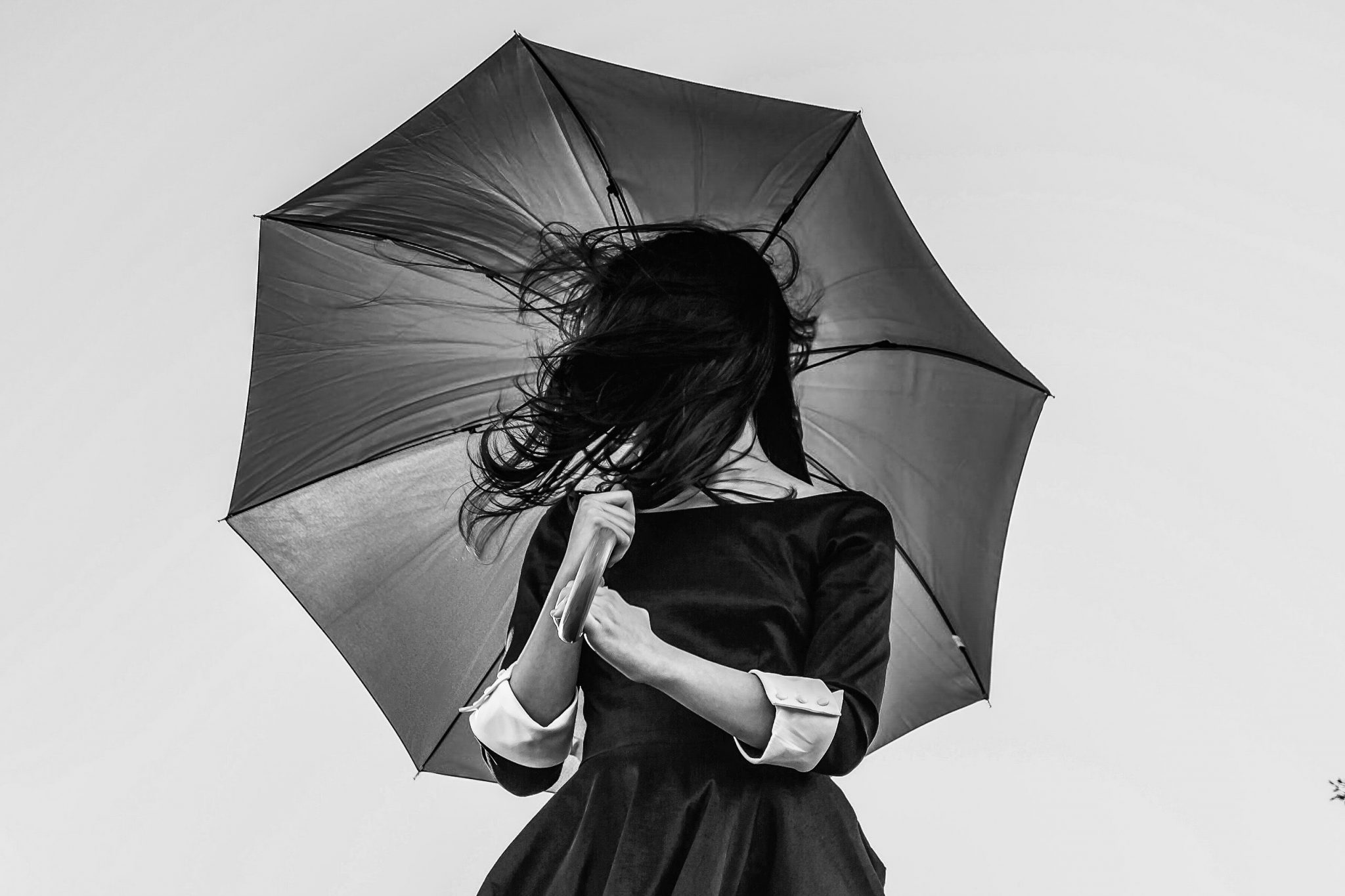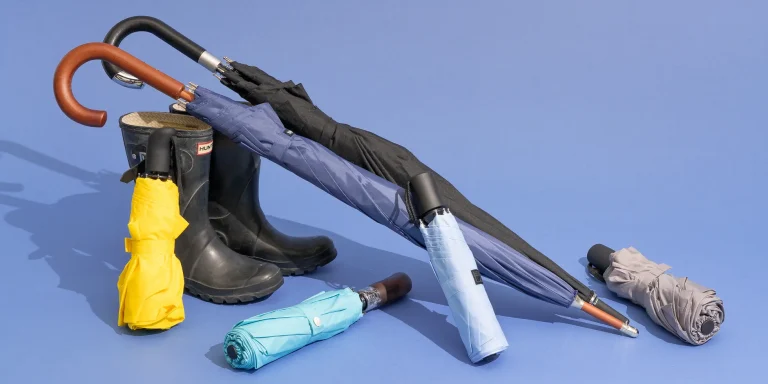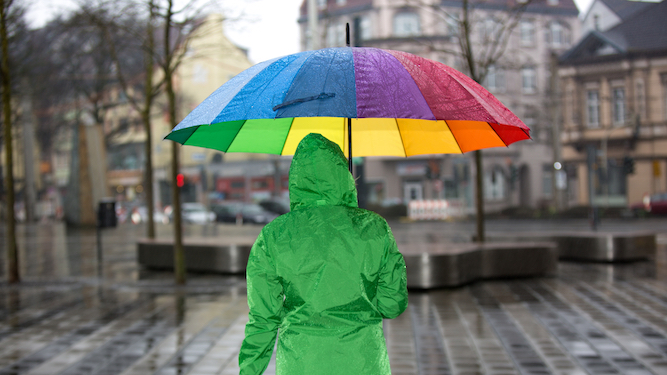Justifications for carrying a travel umbrella
Having a travel umbrella on hand can make all the difference in the world to your day, whether rain or shine. In a couple of minutes, you could find yourself completely saturated or burnt.
A excellent travel umbrella has various uses, from your everyday commute to a trip to a new place. Travel umbrellas are the ideal traveling companions for both short and long excursions because they are lightweight, compact, and modest.
It’s not a burden to tuck it in your car door, at the bottom of your bag, or down the side of your backpack; you’ll probably forget it’s there until the weather drastically changes. The finest aspect? You are free to leave your raincoat at home thanks to them!
10 Reasons to Pack a Travel Umbrella:
You’ve stepped off the train, plane, or out of the car, ready to begin your day or next adventure, only to realize the weather isn’t as tip-top as the weatherman predicted. Instead of letting the rain dampen your day, consider packing a travel umbrella to keep you dry.
Today’s high-end designs are as compact as they are light, yet still, promise to pack a punch when it comes to protecting you from an unwarranted gust of wind, a freak summer snowstorm, or harsh sunshine.
1. Umbrellas protect travelers in rainstorms and will keep you dry
The main reasons travel umbrellas are so popular? Put simply, they work and have done for years! The humble travel umbrella comes in an array of sizes, styles, and designs, some of which promise to protect you against wind and rain, whilst others weigh less than your smartphone.
It comes as little surprise that one in ten Americans invests in a travel umbrella every year, with an impressive 33 million being sold per annum. That’s a lot of travel umbrellas! The main reason for their popularity? They protect us come rain or shine.
2. Umbrellas provide rain protection and ventilation more than any rain jacket can
If you are heading to a tropical destination or on a hike, the last thing you want to be carting around is a bulky rain jacket. And why would you when a travel umbrella promises twice the ventilation and protection?
Ventilation is the keyword here! If hiking or partaking in any other strenuous activity, sweat can lead to hypothermia, especially when matched with harsh winds.
Umbrellas on the other hand help to regulate our body temperature, by allowing our body heat to evaporate speedily.
Even rain jackets that promise the utmost in ‘breathability’ can encase a consequential amount of heat. If your hiking partner is an avid rain jacket wearer, now is the time to buy them a travel umbrella.
3. Umbrellas weigh less than most rain jackets
At just 3 oz. (87 grams), today’s high-tech, compact travel umbrellas weigh less than your cell phone, which is under half the weight of your average ‘breathable’ raincoat.
Savvy travelers are big on lightening their load – packing a lightweight umbrella will free up space for other important items in their suitcase, whilst promising an effective form of rain and wind protection.
4. Umbrellas work in all weather including snowstorms
Of course, travel umbrellas don’t just protect us from rain, they protect us from harsh sunshine, wind, and snowstorms too, which is why they’re often used all year round – whether embarking on a winter camping trip or walking to work.

5. Umbrellas work through quick rain poor and sunshine periods
If you’ve ventured to tropical climes, you’ll likely experience a combination of freak showers and bouts of sunshine.
Weather that is continuously changing is an umbrella’s best friend! Instead of reaching for your rain jacket, having to go through the time-heavy process of adding and removing layers, reach for your travel umbrella instead.
Several of today’s designs offer quick open and close mechanisms, clips that allow you to attach them to the outside of your bag, and inverted canopies, meaning the place you choose to store your brolly will remain dry.
6. Umbrellas work as sun protection
When it’s chilly outside, we usually reach for a hat. Why? Because our bodies lose around 15% of heat through our heads.
Similarly, this is one of the reasons we disregard our hats as soon as the sun comes out! Even sun hats, despite their many benefits, can make us a little toasty! Have you ever considered using an umbrella instead of a sunhat?
Asides from providing a great deal more shade, umbrellas don’t trap heat in like hats do. If you’re in a wind prone climate, there is always the risk of you losing your hat too, whilst a stormproof umbrella will ensure optimal and indestructible shade at all times – whilst keeping you cool.
Not many know this, but the first umbrella ever created was designed to protect the user from the sun and not from the rain, hence the word umbra, which means shade!
7. The umbrella weight is a small price to pay
Carrying unwarranted extra weight is something we all moan about, whether commuting to work or traveling overseas.
Thankfully today’s travel umbrellas weigh hardly anything. Until you need to use the device, you’ll likely forget you have it with you.
Even if your umbrella weighs a little more than average due to the sheer size of it, being able to shelter from freak rainstorms, strong winds and harsh sunshine outweighs this.
Ensuring you have optimal shade will decrease your need for water in a big way, particularly on warmer days. What does this mean?
You’ll avoid having to cart unnecessary water bottles and sunscreen on your hiking adventures – both items are awkward to pack and weigh more than your average umbrella.

8. Umbrellas provide a small shelter when in need
Another benefit of travel umbrellas? They provide shelter. From acting as a privacy screen in crowded areas to providing a sheltered space to enjoy a meal on the road, read a map or create a makeshift cover for your belongings.
Christine Haffner said she was sold on an umbrella not because of its ability to offer protection from the rain, but its ability to provide privacy.
Whether in the park or on the Appalachian Trail, an umbrella should be one of your go-to accessories. This is when choosing an umbrella with an impressive canopy is a must.
In addition to the above benefits, you can use your handy device to plug a tarp hole, or as an eyeglass protector – allowing you to easily view the road ahead of you, rather than having to keep your eyes firmly focused on the ground.
This often happens when hiking in a rainstorm when you only have a hood to hand.
9. Umbrellas can be an anchor point for your tarp or shelter
As well as using your umbrella as a form of shelter, you can also use it to help you create a temporary cover. How? By using it as an anchor point for your tarp.
If rain is creeping, uninvited, into your tarp, an umbrella will assist backpackers in plugging this hole.
10. Umbrella sticks can be used for all purposes
When it stops raining, this doesn’t mean your umbrella is instantly disregarded. Many backpackers use stick umbrellas as makeshift trekking poles, as a ‘poor man’s ice ax’, or as a weapon to deter the likes of snakes and other wildlife when out in the wild.
If your umbrella is a brilliant, bold hue, it can also be used as a location pointer, allowing you to easily find your belongings, meaning you and the people you are with will never lose their camping spot.

Travel Umbrellas FAQs
Why are umbrellas important?
They protect us from a variety of weather ailments, including rain, sunshine, and light snow.
Yet asides from providing protection alone, they also allow us to disregard other heavy items we normally travel with, such as a bulky rain jacket (this is of course weather dependent).
This makes them one of the best travel buddies to invest in.
What makes a good umbrella?
With so many impressive options on the market today, knowing what to look for in a quality travel umbrella can prove challenging.
Some of the features come down to personal preference, for example, if you’re a 6 foot 4” man, you’ll likely want a bigger umbrella than that of a 5 foot 2” woman.
Similarly, certain handles will be suited to smaller hands, whilst others will have been designed with a bigger frame in mind.
The main factors to consider when investing in a quality travel umbrella? Weight, compactness, length, canopy, strength, and the price tag.
A model that measures between 10 and 11 inches in length and boasts a large, domed, vented canopy, an ambidextrous handle and a shaft that folds in two sections is the ideal choice for most people – from city folk to those who enjoy a backpacking adventure.
What is the best travel umbrella?
Again, this comes down to personal preference and should be based on where you intend to use the umbrella.
There are several market-leading umbrella brands, all of which have earned some serious status, including the Repel Windproof Travel Umbrella, which comes with Teflon coating, the Original Bubble Umbrella from Hunter, Totes Auto Open Close Compact Umbrella, and the BAGAIL Double Layer Inverted Umbrella to name a few.
These travel umbrellas are available on Amazon and come with high ratings thanks to their compact size, impressive strength, and stylish designs.

How do I choose an umbrella?
Ask yourself where you will be using the umbrella, is it mainly to commute to and from work, or do you intend to take this on a hiking adventure? If the latter option, you’ll need to invest in a model that is as strong as it is lightweight, and a design that promises wind and rain protection.
A great way to whittle your choice down is to read reviews online. Those who have already tried and tested a variety of market choices will be able to give you the honest down low when it comes to choosing the best umbrella for your needs.
If you have any specific questions, you can leave a reply on live reviews, such as those featured on Amazon. Simply fill in the published required fields.
If looking to online reviews for inspiration, opt for the editor’s pick or the preferred choice from Amazon.
What are the benefits of always carrying an umbrella?
Instead of allowing a sudden downpour to ruin your day, having a travel umbrella to hand will enable you to explore a new city, get to and from work, or from the car to the restaurant without getting completely drenched.
This can make all the difference to your enjoyment. If you choose not to pack one, you’ll end up wasting your money on a low-quality brand to get from A to B, which will likely end up in the trash can before you’ve made it to your final destination.
When it comes to top travel tips, always pack an umbrella!
Why is it important to choose the right umbrella
Just like cars, clothes, and food, we all have our personal preferences. When it comes to choosing the right umbrella, it’s important to consider your lifestyle, your budget, and the brands available.
Simply picking an umbrella because it looks stylish or matches a certain outfit isn’t a sensible option, especially when there are numerous designs on the market that are as stylish as they are sturdy.
If you’re an avid hiker, you’ll need to choose a travel umbrella with an impressive wind-proof rating, a large canopy, and a size that fits in your backpack.
However, if you’re battling through the busy streets of New York, you’ll need an umbrella that isn’t going to get in the way, or worse still, injure any of your fellow pavement pounders.
How much does a travel umbrella weigh?
This varies on the brand and the design. Currently, the lightest umbrella in the world weighs just 3 oz. To put this into perspective, this is half the weight of the latest iPhone.
Although weight is extremely important when it comes to selecting a compact travel umbrella, it’s imperative to consider strength too.
If you intend to battle harsh winds and hectic storms, you’ll need to invest in a sturdy design to ensure you’re able to tackle these elements, which may weigh slightly more.
What is the benefit of a travel sleeve?
A travel sleeve not only protects your umbrella, but it also ensures where you choose to store your umbrella isn’t damaged by rainwater. Almost every umbrella user will opt for a travel umbrella that comes with a handy sleeve over those that don’t.
If you happen to lose your umbrella sleeve (it happens to the best of us) you can easily order a replacement online from the likes of Amazon or other retail giants.
When was the first umbrella invented?
Umbrellas were first invented in 1000 B.C. by the Egyptians. Instead of being used to keep you dry, these parasols sheltered nobility from harsh sunlight.
Crafted out of lotus leaves and feathers, they differ greatly from the models available today.
Is it difficult to hold an umbrella?
Many avoid investing in an umbrella because they think their arms will get tired of holding it.



